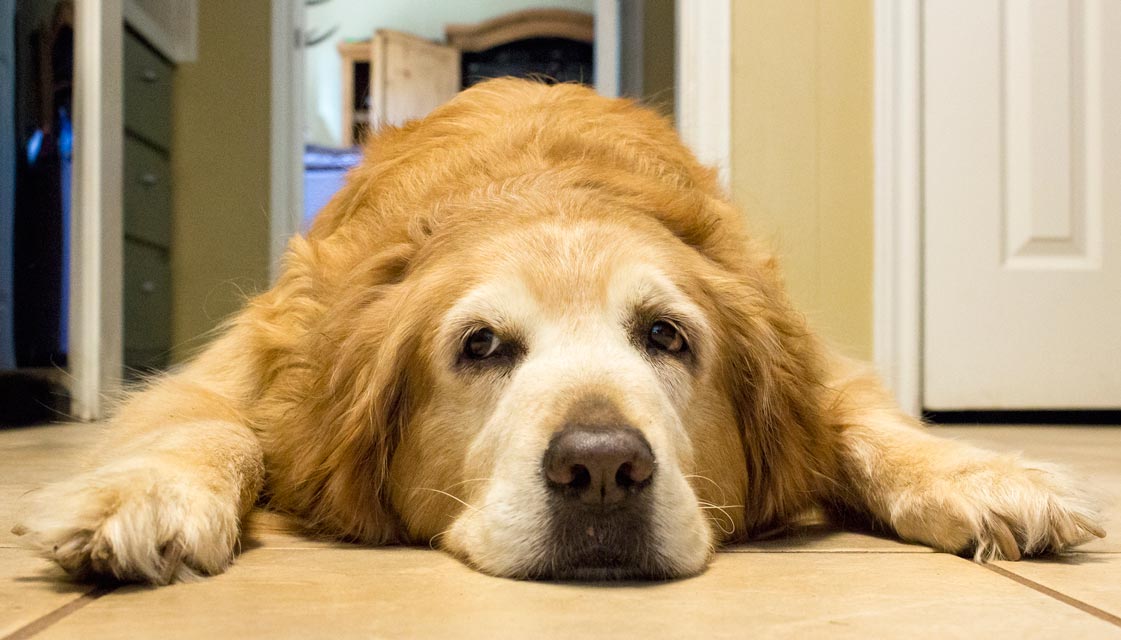Aspiration Pneumonia in Dogs

Aspiration pneumonia is a condition during which inhaled material (usually food but sometimes water or other small objects) goes down the trachea instead of the esophagus and lodges in the lungs, causing inflammation and often bacterial infection. Fluid builds up in the lungs, making it difficult for them to exchange oxygen properly.
What Causes Aspiration Pneumonia in Dogs?
Usually, aspiration occurs during vomiting or regurgitation. It can also happen if there is a problem with the way the esophagus (the tube from the throat to the stomach) is working. For example, the condition of megaesophagus can result in aspiration pneumonia.
Usually, the cartilage flaps of the larynx, or voice box, close during swallowing to protect the airway from food going into the trachea instead of the esophagus. However, in certain situations, the larynx doesn't do that job well, including when the dog is under the after-effects of general anesthesia or when laryngeal paralysis is present.
Signs of Aspiration Pneumonia in Dogs
When a dog is suffering from aspiration pneumonia, the owner may observe some or all of the following signs:
- Coughing
- Labored breathing
- Drooling
- Fever
- Discharge from the nose
- Increased respiratory rate
- Increased heart rate
- Exercise intolerance
- Weakness
The dog may also show other signs related to the initial cause of aspiration pneumonia, like regurgitation if the trigger was megaesophagus.
How Is Aspiration Pneumonia in Dogs Diagnosed?
A veterinarian will do a thorough physical examination of your dog as well as discuss the signs you noticed at home. The vet may hear a rasp or wheeze in the dog's lungs when he or she listens with a stethoscope. The dog may have a fever.
From there, the veterinarian may suspect pneumonia and do chest x-rays to visualize the lung fields. During pneumonia, fluid is present in the lungs, and that shows up on an x-ray.
Blood work may or may not show indications of a systemic infection, depending on how advanced the condition is when it's done.
The veterinarian may remove some fluid from the lungs with a needle and examine it under a microscope. That can help determine whether there are bacteria present and, if there so, what antibiotic they may respond to best (a culture and sensitivity test would determine that, and those results can take a week or so).
Treatment of Aspiration Pneumonia in Dogs
If the dog presents to the veterinarian in respiratory distress or shock, emergency measures such as oxygen and intravenous fluid therapy will need to be undertaken right away.
The vet will probably begin a broad-spectrum antibiotic and keep the dog in a quiet area where he can easily be monitored.
Next, the vet will need to determine what caused the aspiration pneumonia. More testing, such as special x-rays to diagnose megaesophagus, may be required. Until the situation starts to improve, the vet will probably keep your dog NPO (nothing per os), which means not giving anything to eat or drink.
Once the dog is stable, oral medications will begin, and your dog will probably go home on a regimen of special food. Other treatments and recommendations will vary depending on the initial cause of the aspiration pneumonia.
You May Also Like These Articles:
X-Rays in Dogs: What Can They Tell Your Vet?
Disclaimer: This website is not intended to replace professional consultation, diagnosis, or treatment by a licensed veterinarian. If you require any veterinary related advice, contact your veterinarian promptly. Information at DogHealth.com is exclusively of a general reference nature. Do not disregard veterinary advice or delay treatment as a result of accessing information at this site. Just Answer is an external service not affiliated with DogHealth.com.


